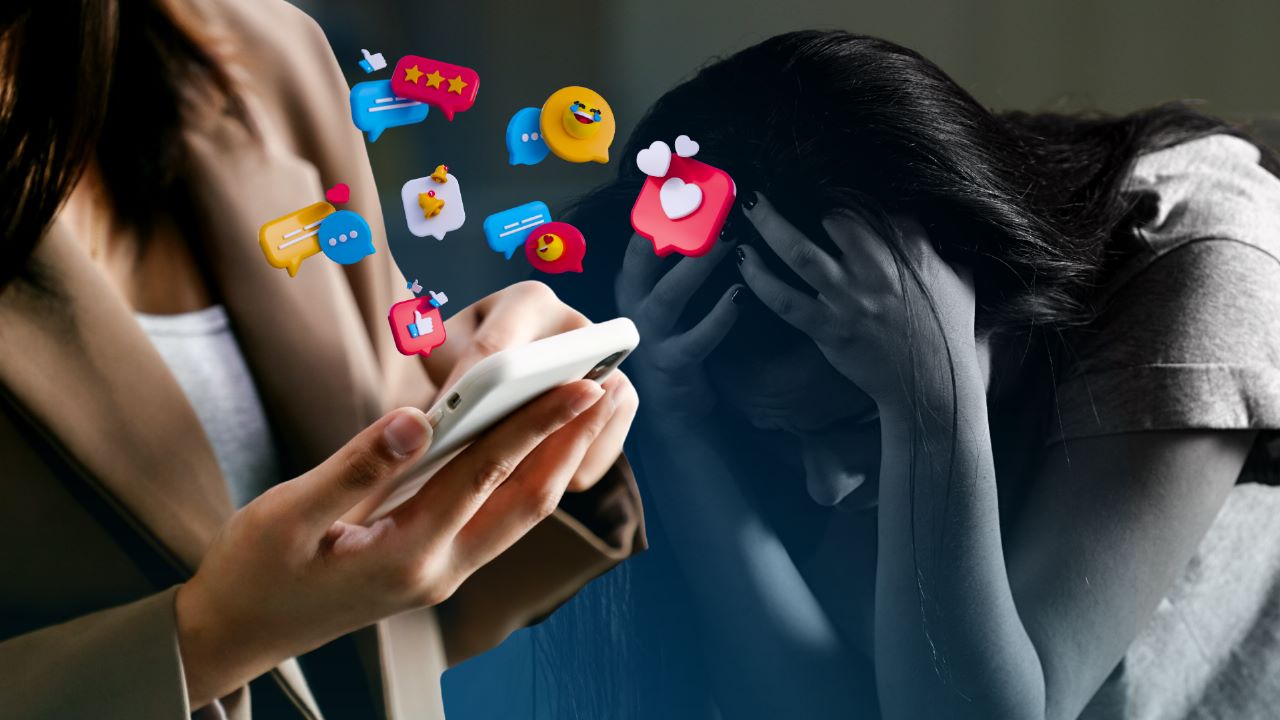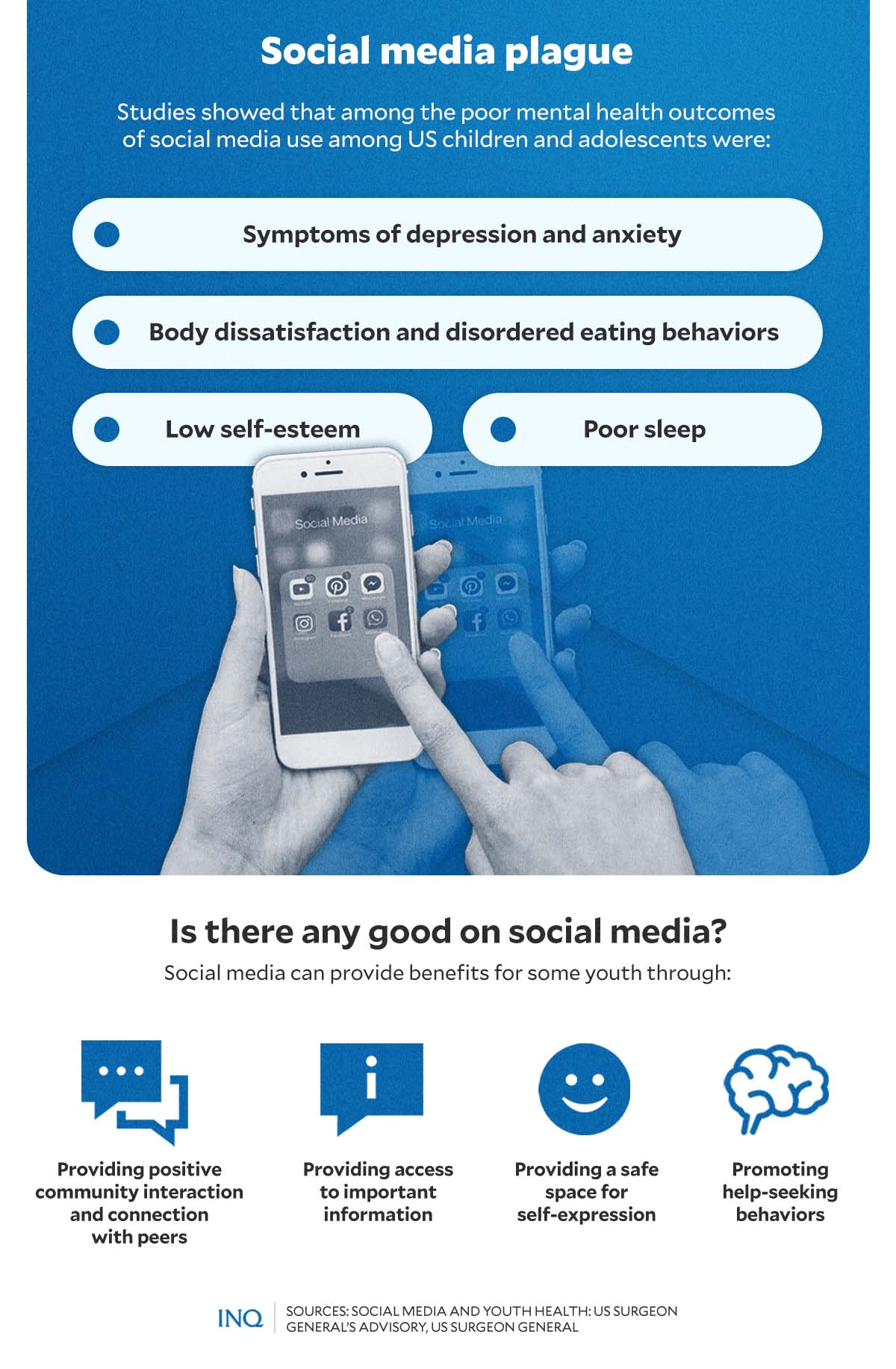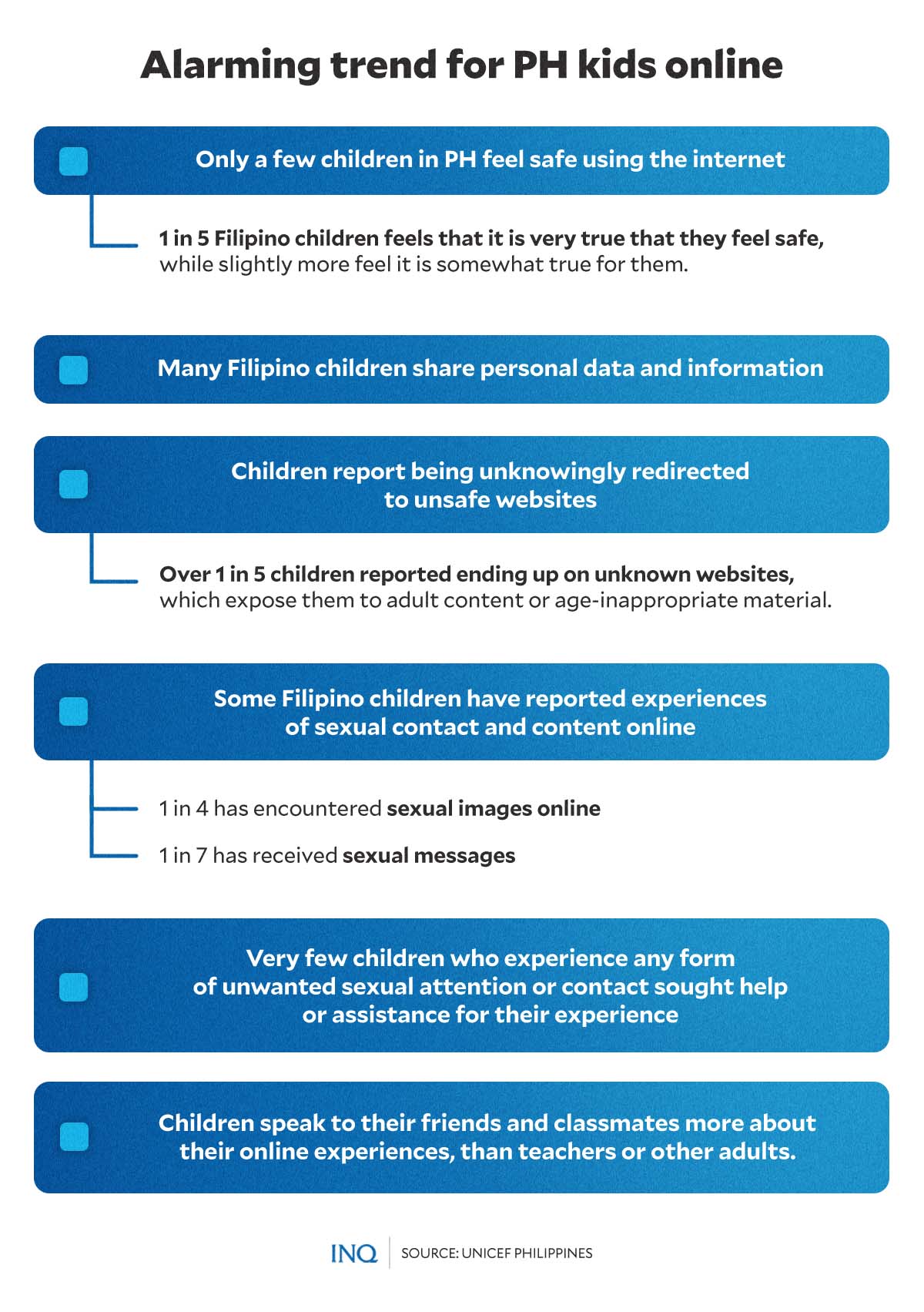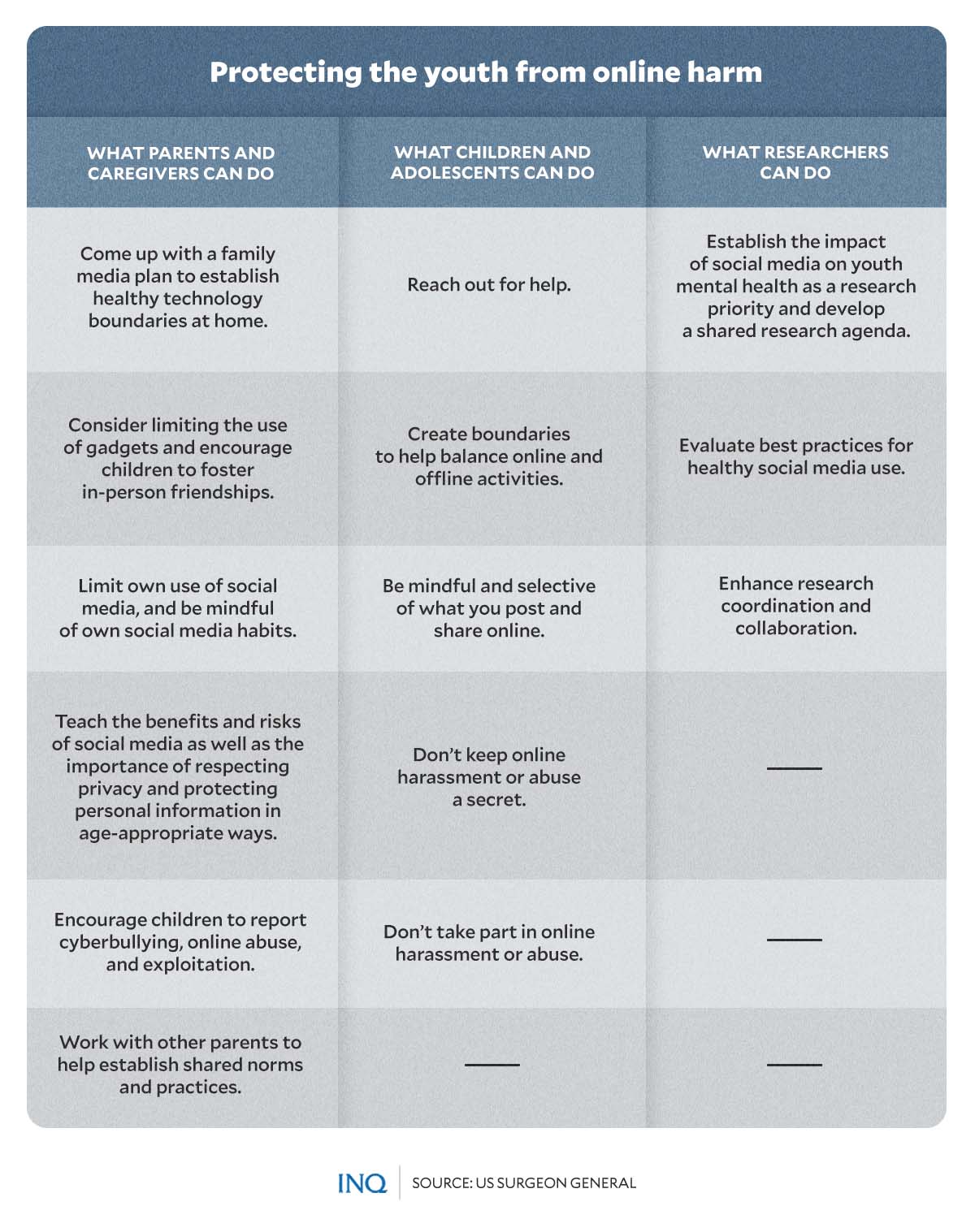Social media monster targeting youth mental health, says US report
MANILA, Philippines—While the internet and social media have already become embedded in the daily lives of countless children and young people to connect with others and as sources of information, these carry severe risks to mental health, according to the US Surgeon General’s Office.
According to psychologists, crucial brain development occurs during ages 10 to 19 when adolescents also experience a period of extreme risk-taking behaviors and their wellbeing undergoes the greatest fluctuations. This is also when mental health issues, like depression, usually emerge, according to the advisory.
It is also during this period when most children and adolescents spend a lot of time scrolling through social media. According to the advisory, nearly 40 percent of children ages 8 to 12 in the US use social media—this is despite the fact that the required minimum age to access most social media sites is 13 years old.
Data also showed that at least 95 percent of adolescents aged 13 to 17 in the US reported using social media platforms, with over a third saying they access social media “almost constantly.”
Social media have had benefits to children and adolescents. Among these are providing positive community and connection with peers, access to important information and knowledge, offering safe space for self-expression and promoting help-seeking behaviors—which could be an early step to mental health care.
But as much as social media offers benefits for the youth’s wellbeing, the US Surgeon General’s latest advisory stressed that “there are ample indicators that social media can also have a profound risk of harm to the mental health and wellbeing of children and adolescents.”
“At this time, we do not yet have enough evidence to determine if social media is sufficiently safe for children and adolescents,” the advisory said.
‘Profound risk of harm’
Previous studies had shown that children and adolescents, who spend at least 3 hours per day on social media, are at higher risk of experiencing mental health issues, including symptoms of depression and anxiety.
A study found that 30 minutes of social media use per day over three weeks “led to significant improvements in depression severity” among college-aged youth.
Another study linked the use of social media to cyberbullying-related depression, poor body image and eating disorders, and poor sleep quality among adolescents who are already experiencing poor mental health.
“Excessive and problematic use of social media can harm children and adolescents by disrupting important healthy behaviors,” the advisory noted.
“Excessive and problematic social media use, such as compulsive or uncontrollable use, has been linked to sleep problems, attention problems, and feelings of exclusion among adolescents,” it added.
Aside from excessive social media use, the many influences of social media on youth mental health are also affected by complex factors, like the type of content they consume or are exposed to.
Alarmingly, many extreme, inappropriate, and harmful contents online are easily and widely accessible to many children and adolescents.
“In certain tragic cases, childhood deaths have been linked to suicide- and self-harm-related content and risk-taking challenges on social media platforms,” the US Surgeon General said.
“This content may be especially risky for children and adolescents who are already experiencing mental health difficulties.”
Social media platforms also expose children and adolescents to dangerous predatory behaviors and interactions with malicious individuals—including adults seeking to sexually exploit children.
PH kids’ alarming online experiences
In 2020, a study by Unicef Philippines revealed the nationally representative data on children’s access to, use of, and experiences of, digital technology and the internet. Data showed a glimpse of the risks for Filipino children online.
The study found that on average, the age at which children in the country first go online is 10 years old—and they spend on average under two hours a day online.
Most children in the country reported generally having a good time when online. However, Unicef Philippines stressed that it is “a cause for concern” that merely 3 in 10 children feel they are having fun online.
“These feelings may reflect both negative experiences of children they have personally had online or reflect adult or peer narratives that emphasize negative aspects and experienced online over positive,” the report said.
“It may also reflect the fact that children feel that the content itself that they encounter online is unsuitable for children their age, referring to educational or entertainment content.”
The same study found that fewer than 1 in 2 children in the country feel safe using the internet. Still, majority of Filipino children online show their faces, addresses, and full body photos on their social media profiles.
It also noted that several children reported encountering pop-ups and links to adult content that appear on many seemingly innocuous sites. These pop-ups and links, which were reportedly found within games and other apps accessible to children online, inadvertently expose children to adult content, according to Unicef Philippines.
In fact, 1 in 4 children in the country have encountered sexual images online. More alarmingly, a little more than 1 in 10 of children also reported they had seen or received a sexual message, video, or image that they did not want.
In addition, a number of children in the Philippines have reported being asked to talk about sexual acts with someone online against their will. Some have encountered situations where they are asked for explicit photos of themselves by someone online.
“While [the digital world and internet] comes with a wealth of benefits and advantages, it also comes with risks,” the study stated.
“[I]t is only in truly understanding how children go online—where and what devices and instruments they use to go online, how they learn, who supports them online, and what they do—that one can ensure that this new domain in which children live their life, that is so embedded with the domains of family and homes, schools, and broader communities, is best suited to maximise the benefits, while minimizing and mitigating the risks and harms that might be attached to the space,” Unicef said.
Protecting youth against online harms
“Our children and adolescents don’t have the luxury of waiting years until we know the full extent of social media’s impact. Their childhoods and development are happening now,” the US Surgeon General’s advisory stressed.
“At a moment when we are experiencing a national youth mental health crisis, now is the time to act swiftly and decisively to protect children and adolescents from risk of harm.”
According to the advisory, some steps parents and caregivers can do to protect and support children and adolescents against the risk of online harm are:
- Promoting open family discussion and creating rules about screen and online time, as well as promoting content boundaries and not disclosing personal information online.
- Restricting the use of phones, tablets, and computers for at least an hour before bedtime and through the night.
- Parents are also encouraged to set a good example of what responsible and healthy social media use looks like by limiting their own use and being mindful of social media habits.
- Discussing with children the benefits and risks of social media and the importance of respecting privacy and protecting personal information in age-appropriate ways.
- Encouraging children to seek help should they need it.
However, the advisory stressed that the effort of mitigating the potential harms of social media should not be placed solely on the shoulders of parents and caregivers.
Policymakers, researchers, children and adolescents themselves, and most importantly technology companies play a role in promoting and ensuring safe online environments for the youth.
“We must acknowledge the growing body of research about potential harms, increase our collective understanding of the risks associated with social media use, and urgently take action to create safe and healthy digital environments that minimize harm and safeguard children’s and adolescents’ mental health and well-being during critical stages of development,” the advisory noted.
TSB
RELATED STORIES:
DOH to parents: Check kids’ online habits
Lack of awareness hinders mental health services for kids among LGUs




